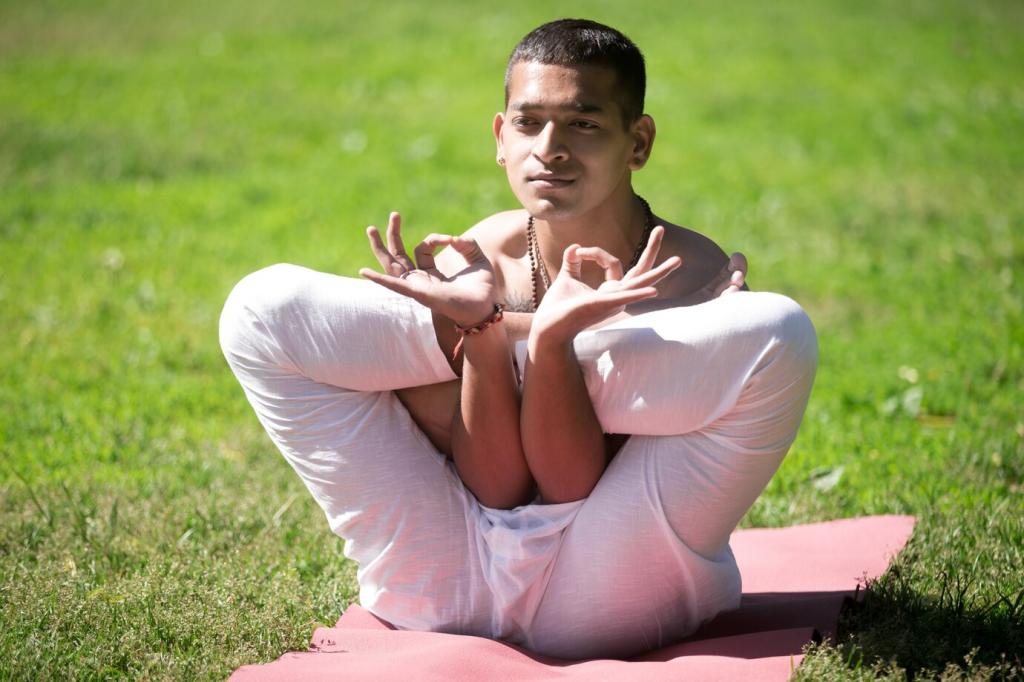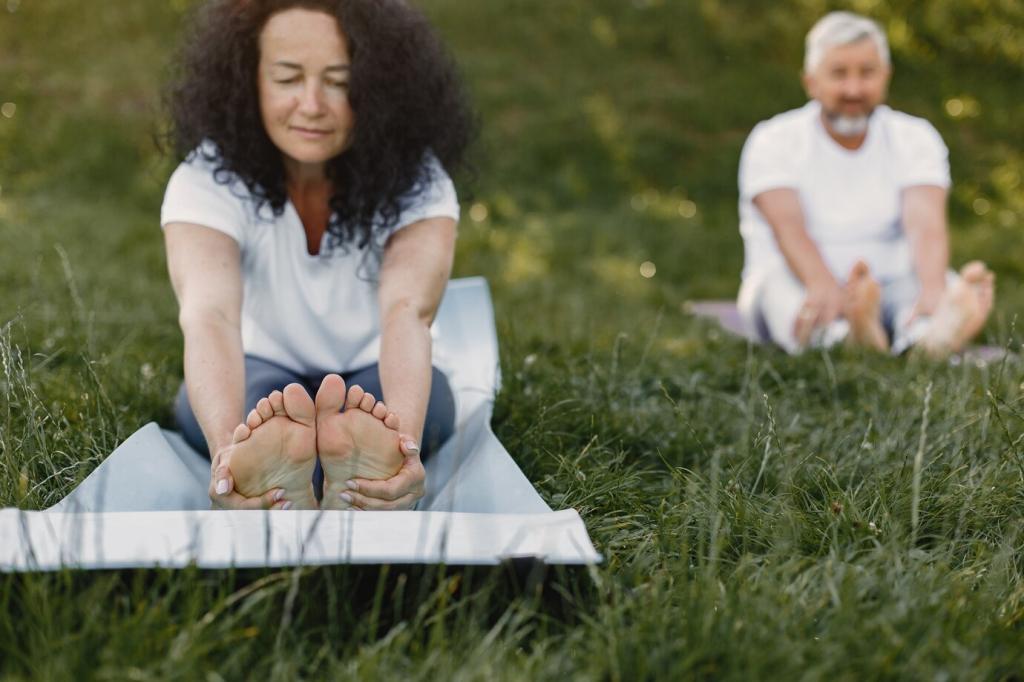Enhancing Physical Performance with Mindfulness Techniques
Today’s focus: Enhancing Physical Performance with Mindfulness Techniques. Step into a sharper, steadier version of yourself where breath, attention, and purposeful intention unlock power, precision, and endurance. Join our community—practice, reflect, and share your progress with us.

The Science Behind Mindful Performance
When attention stabilizes, unnecessary co-contraction fades, freeing strength and coordination. Athletes often describe feeling lighter yet stronger. Try choosing one sensory anchor per set, then report whether technique and effort felt smoother.
The Science Behind Mindful Performance
Slow nasal breathing shifts the autonomic balance, lowering pre-session jitters while preserving readiness. A sprinter in our community shaved seconds by practicing three calming cycles before blocks. Test it and share your split times.


Pre-Workout Mindfulness Warm-Up
60-Second Body Scan
Sweep attention from crown to toes, noticing tension hotspots without judgment. Adjust stance, grip, or posture accordingly. Many lifters report cleaner bar paths after this practice. Track any immediate technique improvements you experience today.
Box Breathing Primer
Inhale four, hold four, exhale four, hold four, for three to five rounds. Feel shoulders drop and focus sharpen. Runners often note steadier first kilometers. Try before intervals and share how pacing changed.
Set an Intention You Can Measure
Choose a single controllable intention: consistent tempo, crisp lockout, or quiet footstrike. Say it softly before your first set. After training, journal results and tell us if that intention improved execution.
Strength and Power Through Presence
Aim attention at the working tissue during the hardest third of the rep. One athlete added five percent load in two weeks by focusing on lats during rows. Try it and report your progression.
Strength and Power Through Presence
Match breath cadence to movement: controlled inhale on descent, snap exhale through sticking point. This reduces energy leaks. Film a set, review stability frame by frame, and share what you discovered.

Endurance, Rhythm, and Pacing
01
Breath–Cadence Coupling
Sync two steps per inhale, two per exhale, then extend your exhale slightly during climbs. Athletes often report smoother heart rate curves. Record one run with this pattern and share the difference.
02
Perceived Exertion Honesty Check
Every five minutes, label effort from one to ten without judgment. Adjust pace to match the day’s capacity. This reduces blowups late. Post your graph or describe how even your pacing felt.
03
Flow Triggers on Long Efforts
Pick three anchors—sound of footfall, cool air in nostrils, horizon point. Cycle them when attention drifts. A cyclist reported smoother cadence on windy stretches. Try the cycle and comment on focus.
Skill Sports: Precision Under Pressure
Quiet Eye Technique
Fix your gaze on a specific target point slightly longer before execution. Studies link longer quiet eye to better accuracy. Test during serves or free throws and tell us your hit percentage.
One-Breath Reset Ritual
Before each attempt, exhale slowly through the mouth, relax jaw, then commit. A junior archer reduced shaky releases using this cue. Try it during drills and share before-and-after grouping patterns.
Vivid, Kinesthetic Visualization
Imagine the movement from inside your body: grip pressure, joint angles, follow-through. Keep visuals short and specific. Post-practice, describe sensations you predicted correctly and how accuracy or timing improved.
Recovery, Adaptation, and Injury Resilience
Five minutes of extended exhales nudge the body toward parasympathetic recovery. Pair with light mobility. Many athletes wake less stiff. Try tonight, then share tomorrow’s readiness and how your warm-up felt.
Competition Calm and Clutch Moments
Tell yourself, “This is my body preparing to perform.” Athletes who reframe arousal report steadier hands. Pair with two grounding breaths. After competing, share whether jitters felt more like fuel.
Competition Calm and Clutch Moments
Script your opening: stance, breath, first cue, second cue. Simplicity prevents overthinking. A swimmer cut sloppy starts using this plan. Try scripting and report how your opening minute felt different.
Competition Calm and Clutch Moments
Three questions: What worked? What wobbled? What’s one next adjustment? Keep tone curious, not critical. Post your debrief highlights and encourage a teammate to do the same for shared learning.
